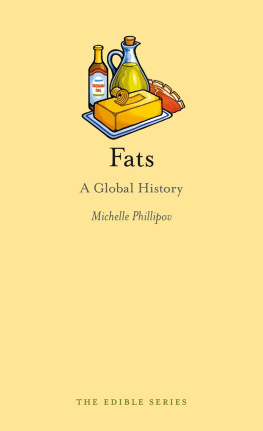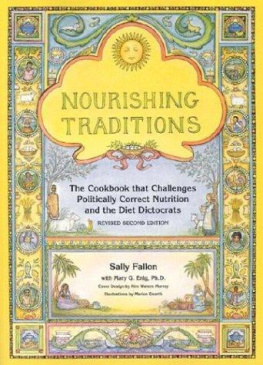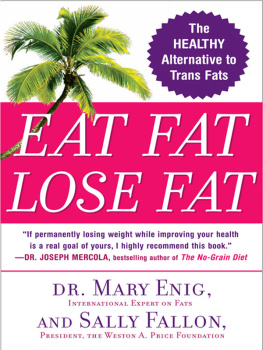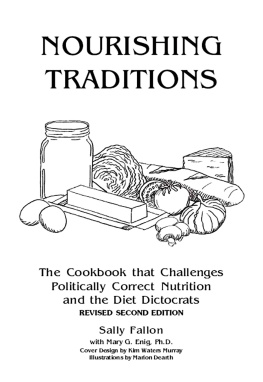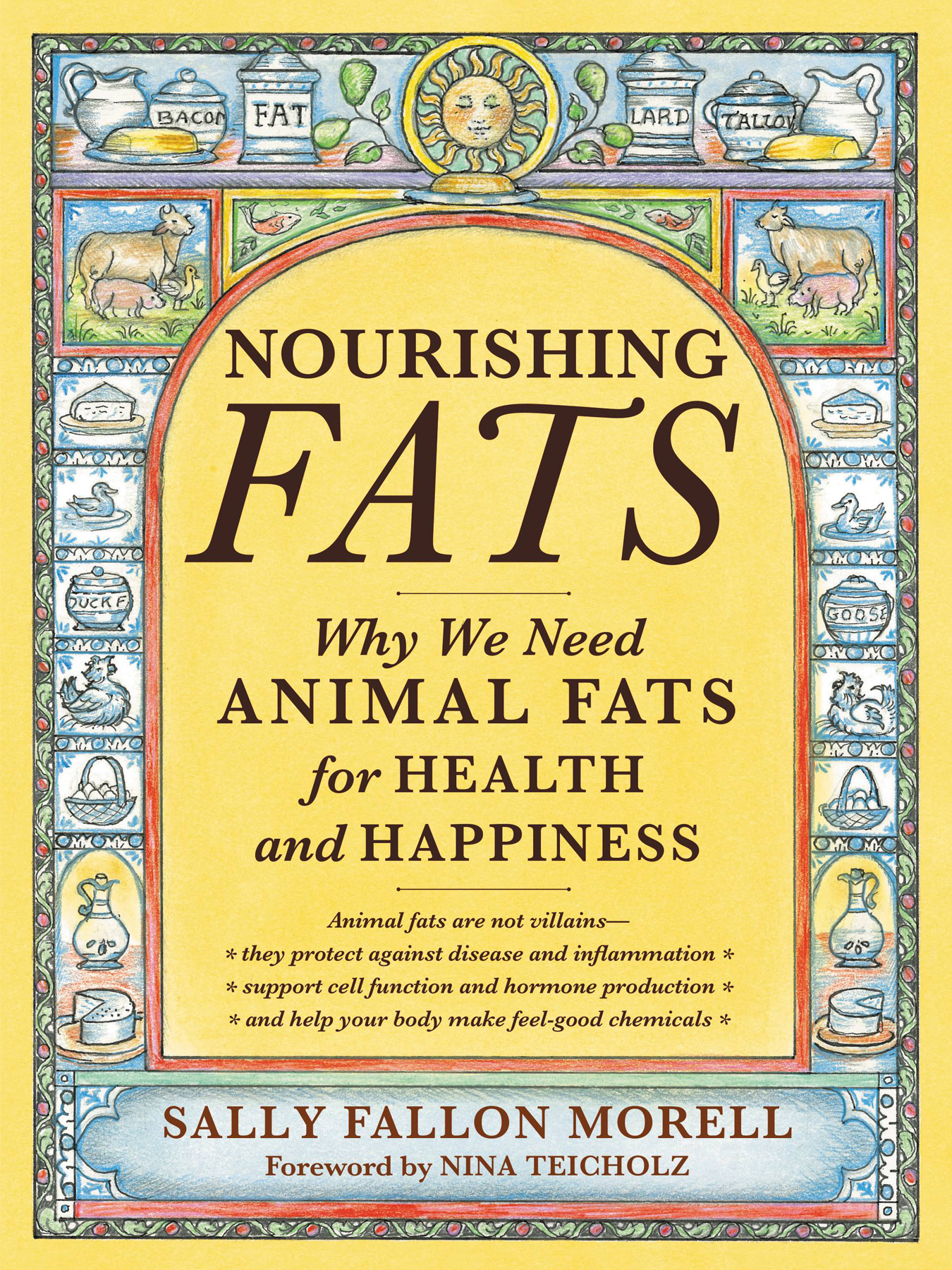To the memory of Mary G. Enig, PhD
Lately theres been a growing chorus of voices challenging the conventional wisdom on dietary fat. Long-standing ideas have been upendedabout which fats are bad and which are good, as well as the general notion that fat overall is a major driver of chronic disease. A large number of rigorous studies now show that you can eat plenty of fat and be slim and healthyor healthier, even. Indeed, in 2015, after thirty-five years of recommending the low-fat diet to Americans, the U.S. government decided to lift its caps on total fat, albeit in such a quiet and confusing way that the public seems hardly to know.
People are even less aware of the origins of this shiftwhat we might call the Great Fat Reconsideration. With the recent proliferation of bloggers and book writers riding a wave of burgeoning enthusiasm about the surprising virtues of butter, eggs, whole milk, and so on, most people dont realize that many of these ideas trace directly back to the Weston A. Price Foundation, and especially to the work of Sally Fallon Morell together with her late, close colleague Mary G. Enig, PhD.
The partnership between Fallon Morell and Dr. Enig was a central force in propelling forward the rethinking of fats over the last twenty years. In 2006, for instance, they co-authored Eat Fat, Lose Fat, which detailed how higher-fat diets helped people maintain good health. This idea dates back a century at least, but its current renaissance has only unfolded over the past five years or so, putting these two women squarely ahead of the curve.
Taking on the scientific orthodoxy like this was second nature to Dr. Enig, who occupied a singular space in the academic world of lipidology (fats). A leading expert who published in academic journals, she simply lacked the fear not to challenge the prevailing dogma. For this she weathered a storm of criticism from her all-male colleagues who called her nutso and a zealot, yet Dr. Enig fiercely stood her ground.
In the 1970s, she was one of the earliest researchers to signal the alarm about the dangers of trans fatsit took mainstream scientists another two decades to catch upand also she spoke out, more generally, about the politics and health problems of vegetable oils. It was Dr. Enig, in fact, who lured me into studying this subject. With her seemingly unbelievable stories about how executives from the vegetable oil industry had repeatedly tried to shut down her work, I knew that Dr. Enig, hardly a kook, was truly a pioneer.
Fallon Morell, meanwhile, skillfully fused the scienceDr. Enigs charts of carbon-chain atoms and carboxyl groupswith the larger cultural and historical context. Put another way, she performed the crucial job of translating nutrition into food. She did this, in part, by writing Nourishing Traditions, a best-selling cookbook that combined recipes derived from ancient traditions, along with riveting, surprising stories about the origins of those traditions. Yes, ancient peoples prized organ meats above all other cuts and let bacteria run amok in their dairy products. For the average American, these were mind-bending revelations.
In this way, Sally Fallon Morell has carried forward the work of Dr. Price, the dentist whose stunning photos of healthy primitive peoples, along with accounts of their diets, provides a historical, anthropological record of how humans ate before the onset of chronic diseases. Modern nutrition science ignores all this history at its perilwhich is why her work in preserving and furthering this crucial knowledge is such a profound contribution to the many researchers and laypeople now trying to rediscover our lost food culture.
Another important part of Dr. Prices legacy that Fallon Morell has skillfully charted into present day is a focus on nutrients, especially those needed for women and children. Nutrition scientists in the 1920s and 30s used to ask the question, so crucial to any animal, namely, what is the best diet for promoting healthy growth and reproduction? What must a pregnant woman eat to ensure a healthy baby and then feed that baby to ensure its healthy development? Attention to these issues vanished in the 1950s, when nutrition scientists swung around to focus instead on the growing epidemic of heart disease, which afflicted middle-aged men. The needs of women and children were thus subsumed to those of men. And this remains true todaysuch that the U.S. governments recommended diets are actually deficient in quite a few key nutrients, and consequently, lunches fed to our children in schools cannot support healthy growth, according to the governments own standards. Getting information about how to provide adequate nutrition to children is now nigh-well impossible.
Except for the Weston A. Price Foundation. Through the work of Fallon Morell, this group has become a beacon for parents in the United States and throughout the world on how to buy and cook food that will result in truly healthy children. Hopefully this focus on nutrients will catch on among the new crop of leaders embracing higher-fat diets. Thus far, however, its been the the singular, brave work of Sally Fallon Morell and her foundation that has kept this vitally important information alive. Through her, so many women, including myself, have learned how to bring up healthy children, and for that, she rightly deserves a medal.


